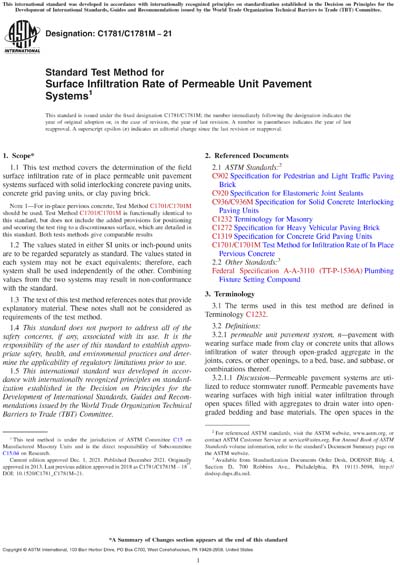Most recent
ASTM C1781/C1781M-21
Standard Test Method for Surface Infiltration Rate of Permeable Unit Pavement Systems
1.1This test method covers the determination of the field surface infiltration rate of in place permeable unit pavement systems surfaced with solid interlocking concrete paving units, concrete grid paving units, or clay paving brick.
Note 1:For in-place pervious concrete, Test Method C1701/C1701M should be used. Test Method C1701/C1701M is functionally identical to this standard, but does not include the added provisions for positioning and securing the test ring to a discontinuous surface, which are detailed in this standard. Both tests methods give comparable results
1.2The values stated in either SI units or inch-pound units are to be regarded separately as standard. The values stated in each system may not be exact equivalents; therefore, each system shall be used independently of the other. Combining values from the two systems may result in non-conformance with the standard.
1.3The text of this test method references notes that provide explanatory material. These notes shall not be considered as requirements of the test method.
1.4This standard does not purport to address all of the safety concerns, if any, associated with its use. It is the responsibility of the user of this standard to establish appropriate safety, health, and environmental practices and determine the applicability of regulatory limitations prior to use.
1.5This international standard was developed in accordance with internationally recognized principles on standardization established in the Decision on Principles for the Development of International Standards, Guides and Recommendations issued by the World Trade Organization Technical Barriers to Trade (TBT) Committee.
ASTM International [astm]

